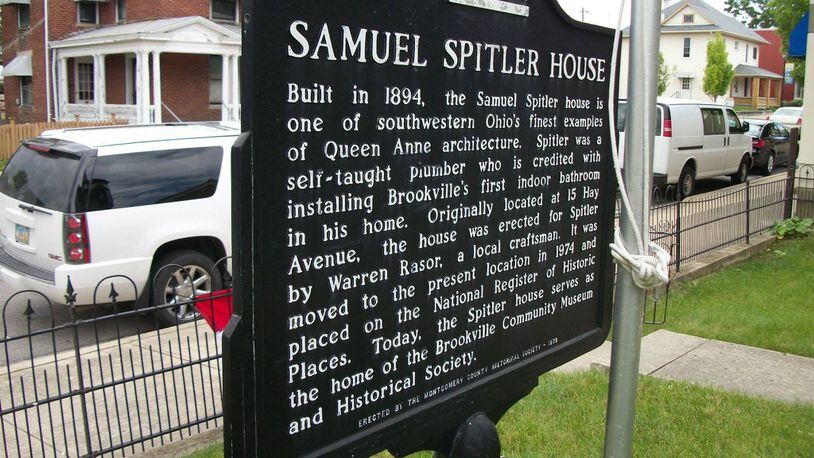Samuel Spitler was born in Clay Township in 1861 to parents Daniel and Prudence. By 1904, Spitler had moved to Brookville with his wife, and had a daughter, Anona.
The house was built for Spitler in 1894 by Warren Rasor with a Queen Anne architecture, which historians call the most important feature, according to the website.
Rasor was inspired by the architect George F. Barber. Family members say the material to build the house cost about $1,700 and the labor cost about $500.
In the Ohio Historical Society’s publication, Echoes, architectural historian Judith Kitchen described the house:
“A fantastic building, with an octagonal tower, profusion of porches, and imaginative use of ornamental detail,” Kitchen stated. “It is rare to find a house of this style in a small town.”
Kitchen wrote that she knows of no other in existence today. Brookville’s population was about 600 in 1894.
The house was saved from demolition by leadership of the Brookville Historical Society and contributions from numerous people.
A couple donated the house to the historical society. They had a fundraiser called “Save the Spitler House”. The fund bought a plot of land nearby, and the house was restored to its original state, with the colors of light cream and green. It opened again on May 15, 1976.
The main halls are the full width of the house and the woodwork is beautiful golden oak, delicately carved. There is even a statue of Shakespeare with a library nearby.
The parlor is the formal room of the house and the golden oak can be seen on the sliding doors. The furniture is typical of the time the house was originally built.
The dining room has golden oak woodwork and a carved fireplace. The walls are covered in lincrusta, which is an embossed paper.
The kitchen and pantry were the center of activity for the house. Spitler had designed it so the water for the house would run through the pipes at the kitchen range to make hot water for the upstairs bathrooms.
The upper hall is spacious with a variety of folk art of the 1800s that are crafted from hair, shells, beads, feather and yarn. The master bedroom is large with a window and door that lead to the house’s seventh porch. The tower room is unique in shape and adds an architectural flair.
The bathroom is believed to be the first indoor bathroom in Brookville, and the original fixture are still showcased.
The basement has not been restored to its original state. Instead, it has a variety of exhibits.
It is also home to the city’s annual Christmas Tree Lighting.
The Spitler House serves as a community museum and is open for tours on the second Sunday months March through November from 2 p.m. to 4 p.m. except holidays and inclement weather. The house can be open other days, upon request.
The price for children under the age of six is free, six to 16 is 50 cents and adults are $2. All the proceeds will go straight to the house. There is a special group rate of $25, with advance notice.
Visit the Spitler House's website or Facebook page for updates and information.
About the Author
